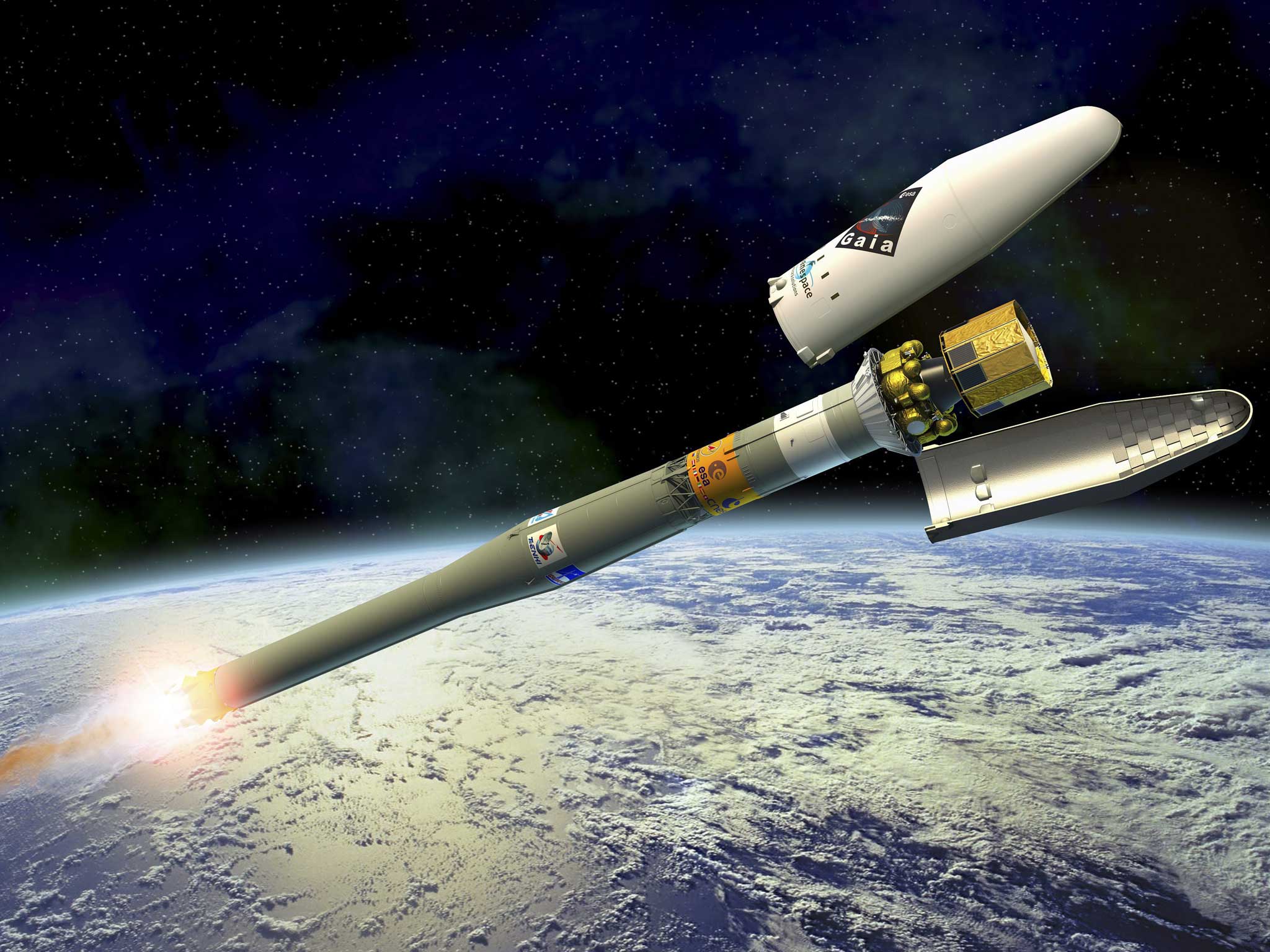£2bn Gaia space probe blasts off on five-year mission to map a billion stars
It is also expected to discover thousands of previously unknown objects

Your support helps us to tell the story
From reproductive rights to climate change to Big Tech, The Independent is on the ground when the story is developing. Whether it's investigating the financials of Elon Musk's pro-Trump PAC or producing our latest documentary, 'The A Word', which shines a light on the American women fighting for reproductive rights, we know how important it is to parse out the facts from the messaging.
At such a critical moment in US history, we need reporters on the ground. Your donation allows us to keep sending journalists to speak to both sides of the story.
The Independent is trusted by Americans across the entire political spectrum. And unlike many other quality news outlets, we choose not to lock Americans out of our reporting and analysis with paywalls. We believe quality journalism should be available to everyone, paid for by those who can afford it.
Your support makes all the difference.A £2 billion European probe has blasted into space on a five-year mission to map more than a billion stars.
The Gaia space telescope was launched by a Russian Soyuz rocket from Europe's space port in Kourou, French Guiana, shortly after 9am UK time.
It is en route to a gravitationally stable parking place called the L2 Lagrangian point almost a million miles from Earth.
Gaia is designed to create the most accurate map yet of our galaxy, the Milky Way, by pinpointing millions of stars in 3D with unprecedented accuracy.
It is also expected to discover thousands of previously unknown objects, including exploding stars, planets orbiting other suns, and nearby asteroids.
Scientists hope Gaia will yield clues about two of the universe's biggest mysteries, Dark Matter and Dark Energy.
Situated with the Earth shielding it from the Sun, the craft will be perfectly placed to observe the wider universe. As it spins slowly, two telescopes will sweep across the entire sky and simultaneously focus their light on the largest digital camera ever put into space.
More than a billion stars will be observed an average of 70 times each over the five-year period.
Gaia will measure the position and key physical properties of every star, including its brightness, temperature and chemical composition.
The flood of data beamed back to Earth will be enough to fill more than 30,000 CD-ROMs.
Speaking after the launch, the European Space Agency's director of science and robotic exploration, Alvaro Gimenez, said: "Gaia represents a dream of astronomers throughout history, right back to the pioneering observations of the ancient Greek astronomer Hipparchus, who catalogued the relative positions of around a thousand stars with only naked-eye observations and simple geometry.
"Over 2,000 years later, Gaia will not only produce an unrivalled stellar census, but along the way has the potential to uncover new asteroids, planets and dying stars."
British scientists and engineers have played key roles in the design and construction of the spacecraft.
Professor Gerry Gilmore, from Cambridge University, the UK's principal Gaia investigator, said: "The results from Gaia will revolutionise our understanding of the cosmos as never before.
"Our understanding of what's out there has been driven by looking at what we can see. We've never had a genuine opportunity to look at everything, to know what's there, and to know where they are in relation to each other."
Tomorrow mission controllers will perform the first of two critical thruster firings to place the probe on the right trajectory to its home orbit.
About 20 days after launch, the second burn will insert Gaia into the L2 orbital slot.
PA
Subscribe to Independent Premium to bookmark this article
Want to bookmark your favourite articles and stories to read or reference later? Start your Independent Premium subscription today.
Join our commenting forum
Join thought-provoking conversations, follow other Independent readers and see their replies
Comments